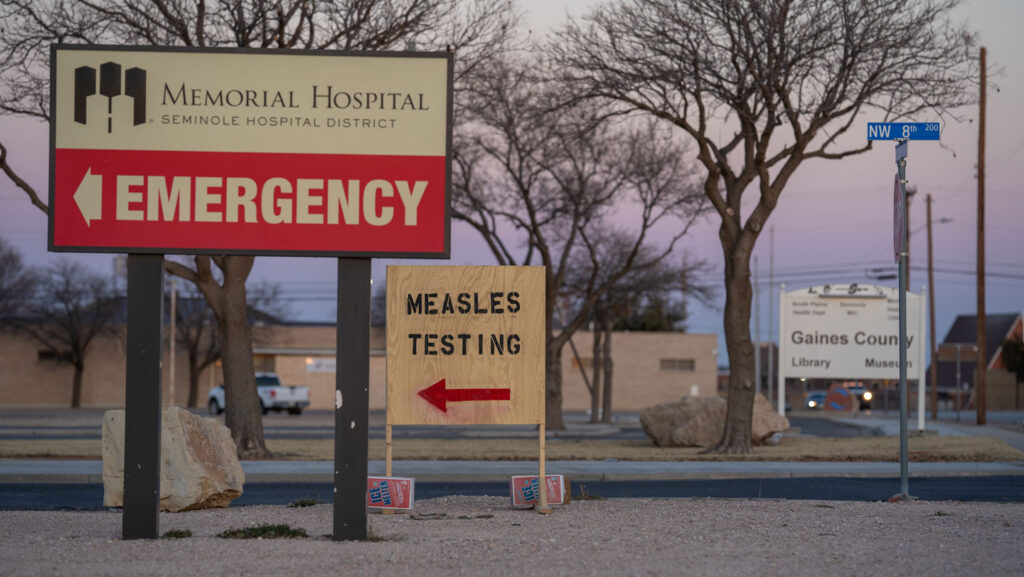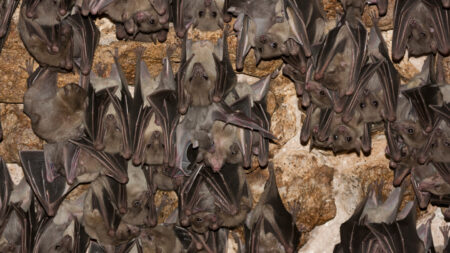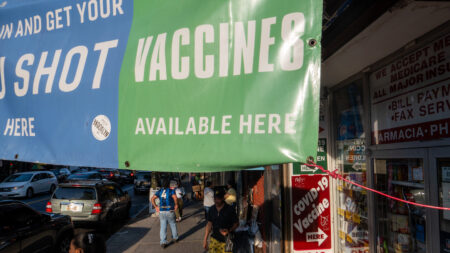The United States is facing a pivotal moment in efforts to keep one of the world’s most contagious diseases at bay. Measles cases have reached a 33-year high just halfway through 2025. This grim milestone has public health experts worried that unless vaccination rates rise, the virus could cause more regular outbreaks every year.
As of July 15, a total of 1,309 people had been diagnosed with measles, the highest number since the disease largely stopped circulating in the United States a quarter century ago. The last time there were this many measles cases was in 1992, when more than 2,000 people fell ill.
With U.S. vaccine policy under new scrutiny by the Trump administration, public health experts are alarmed about the possible resurgence of this vaccine-preventable disease. Falling measles vaccination rates across the country have created pockets of vulnerability where not enough people have immunity to smother its spread.
“Measles is the virus that I love to hate,” says Walter Orenstein, a vaccinologist at Emory University School of Medicine in Atlanta and former director of the National Immunization Program who worked to push measles out of the country with vaccines. “I spent so much of my career trying to get rid of it.”
The outbreaks are especially worrisome as the country reaches the height of summer vacation season. One person with measles can infect 12 to 18 others in a group with no immunity, so even slight drops in vaccine coverage can provide inroads for the virus to take off as people travel.
International travel is of particular concern, especially visits to places where measles still circulates broadly. But domestic travel is also worrisome, says Tina Tan, a pediatric infectious diseases physician at Northwestern University in Evanston, Ill. “With all the measles outbreaks that are occurring, the drop in immunization rates, the increased number of susceptible individuals… it’s a way for measles to spread from one area to another.”
That measles was brought under control has been “such an amazing feat,” says Amy Winter, an epidemiologist at the University of Georgia in Athens. But keeping it that way requires vigilance on two fronts: Making sure people get vaccinated, and keeping an eye out for cases so experts know when measles might make a comeback. Both are under threat.
What does it mean for measles to be eliminated?
Measles was declared eliminated — meaning that any outbreaks were controlled within a year — in the United States in 2000. Measles was eliminated across the Americas in 2016, making it the only region to have beaten back the virus. Outbreaks in 2019 in Brazil and Venezuela revoked that status until public health efforts restored it in 2024.
U.S. elimination status came under threat in 2019 when two separate outbreaks in New York went on for 9½ and 10½ months. Measles transmission stopped in the nick of time, and the virus remained eliminated in the United States. That year, there were 1,274 cases.
Shortly afterward, COVID-19 swept the globe and vaccination rates in many places took a hit as the pandemic disrupted health care and strained resources even as more people became skeptical of vaccines. Pre-pandemic, an average of roughly 94 percent of people across 33 states were vaccinated against measles, researchers reported June 2 in JAMA. But post-pandemic that number dipped to 91 percent. More than three-quarters of the 2,066 U.S. counties included in the study saw declines in measles vaccination rates.
Because measles is so contagious, close to 95 percent of people need to be vaccinated to provide enough community immunity, also called “herd immunity,” to protect those who can’t be vaccinated due to health conditions or age. Babies are first eligible to get a measles shot when they turn 1.
Having high immunity in communities should be considered a national asset, behavioral scientist Alison Buttenheim of the University of Pennsylvania said in a June 25 news briefing hosted by SciLine, a service for journalists and scientists sponsored by the American Association for the Advancement of Science. Much like our national parks or weapon stores, “we have invested a lot in building a vaccination program and financing for it and these amazing vaccines scientifically to build this herd immunity,” she said. “And it is at risk.”
Most people in the United States are vaccinated against measles. The vaccine is among those required for children to attend school, although many states allow for exemptions on a religious or personal basis. So for now, the virus will run into barriers aplenty, limiting its spread to sporadic outbreaks, Orenstein says. But if the population of people who never get the measles vaccine continues to grow, he fears that larger outbreaks could flare up. “I think we are at real risk of losing our elimination status.”
The United States could be at risk for more domestic outbreaks even with current vaccination rates, researchers reported April 24 in JAMA. Nathan Lo, an infectious diseases physician and epidemiologist at Stanford University School of Medicine, and colleagues ran computer simulations of measles spreading. The goal, Lo says, was to determine when measles might be a “commonplace disease” and most Americans know someone who’s been infected.
The team found that if vaccination rates hover around 90 percent, it could take roughly two decades for measles to again become endemic, meaning it continually spreads, and cause large outbreaks. Any further reductions in routine childhood vaccination rates increases the certainty that measles will return, and it could happen much sooner.
But, Lo says, “a small increase in the vaccine coverage could reliably prevent that” from happening.
What is the global impact of U.S. vaccine policy?
Vaccine hesitancy has put the United States in a precarious position with measles, and its policy actions could make it even harder to stay ahead of this and other vaccine-preventable diseases both at home and abroad.
This year’s measles spike has largely been driven by an outbreak in western Texas that flared up at the end of January and has since sickened more than 700 people and killed two. Gaines County, where most cases have been reported, has one of the lowest measles vaccination rates in the state, with just 77 percent of kindergarteners fully vaccinated in the 2024–2025 school year. The outbreak spilled over into other states including New Mexico, Oklahoma and Kansas and crossed international borders into Mexico.
Nearly 90 percent of this year’s roughly 1,300 cases are linked to domestic outbreaks. The remaining cases were imported when international travelers picked up the virus in places where measles still circulates, as happens every year. Some of those travel-related cases have popped up in states such as Colorado and California.
The Texas outbreak has slowed, but it’s still ongoing. And measles is on the rise around the globe. The virus remains endemic in more than half of the world’s countries. By March, Europe had logged more than 127,000 cases, the highest in more than 25 years. Canada and Mexico have each had more than 2,500 cases as of July 1.
Yet in June, new members of the Advisory Committee on Immunization Practices — a key advisory group to the U.S. Centers for Disease Control and Prevention that determines how vaccines should be used — resurfaced previously settled questions about the childhood vaccine schedule. That schedule includes the measles shots – one around age 1 and one around ages 4 to 6 — that can provide a lifetime of protection from the disease. Some members have downplayed the severity of measles and spread misinformation about vaccines.
On the international stage, the United States pulled out of the World Health Organization, which has a program to monitor outbreaks, and stopped financial support for Gavi, the Vaccine Alliance, a group that helps provide and distribute vaccines to low- and middle-income countries. The moves imperil access to vaccines for many people who couldn’t otherwise get them.
More than 75 percent of children around the globe were fully vaccinated against measles in 2024, a slight increase compared with 2023, the WHO announced July 15. But more than 30 million children remain under-protected, which could lead to outbreaks.
That the U.S. government is pulling back from global vaccination has “completely pulled the rug out of international measles control efforts,” Winter says. Before January 2025, experts were having conversations about how to eradicate measles from the globe. “All the conversations now are we’re just putting out fires.”
Cases at the global scale pose threats everywhere, too, because the United States does not exist in a vacuum. “By cutting support for global immunization, we not only put those countries at risk, but when they have resurgences, they can then infect us,” Orenstein says. “So, supporting global immunization is a win-win situation.”
And because measles is so contagious, it’s among the first diseases to threaten public health as immunization rates drop. “What’s really important is to educate people about how severe measles can be,” Orenstein says. “And to think not just about our children, ourselves, but our communities and the world.”
Read the full article here

















